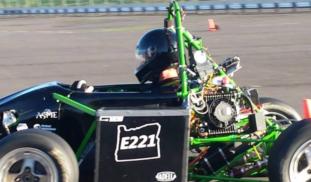Please wait...
About This Project
The formula electric competition began in the summer of 2013. Vehicle design and presentation are judged by industry professionals. The dynamic events include acceleration, autocross, skid pad, and endurance .
Research includes classroom learnings and hands-on engineering skills to determine a balance between performance, weight, and cost of parts to create a well-designed race car that performs well at the competition. Different systems will be researched and created, including chassis, suspension, and especially the electric drivetrain. This aims to create a fully electric race car that does not use any fossil fuels, and can use 100% renewable energy.
More Lab Notes From This Project

Browse Other Projects on Experiment
Related Projects
Real-time underwater fish identification and biomonitoring via machine learning-based compression of video to text
Underwater monitoring of marine life has traditionally followed a "set it and retrieve it” approach due...
Combining eDNA & Biologging Technologies to Capture Deep-Sea Predatory Interactions Between Whales & Prey
We aim to combine eDNA sampling and biologging to study predator-prey interactions in the deep sea in real...
Can A Low-Cost Camera & Loitering Guard Better Monitor Marine Protected Areas?
Marine Protected Areas (MPAs) are difficult to enforce due to their remoteness and often invisible borders...


